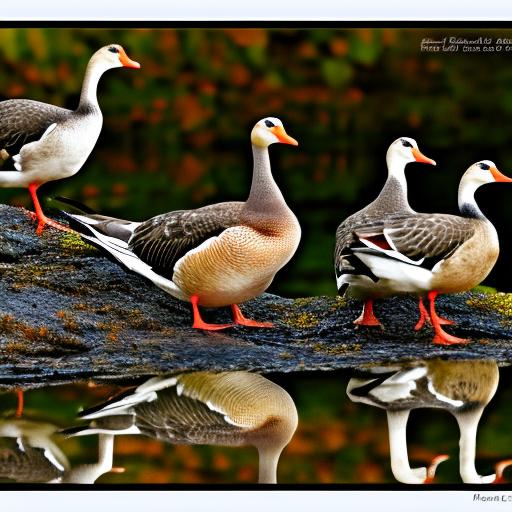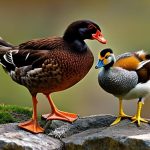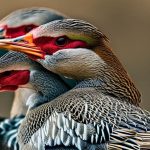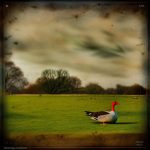Feeding geese in public parks and lakes is a common activity that many people enjoy. It provides an opportunity for individuals to connect with nature and observe these beautiful creatures up close. However, it is important to understand the dos and don’ts of feeding geese to ensure the well-being of both the geese and the environment. By following proper guidelines, we can create a positive experience for both humans and geese.
Key Takeaways
- Feeding geese in public parks and lakes can benefit both the geese and the community.
- Approach geese cautiously and avoid feeding them by hand to prevent injury.
- Optimal foods for geese include grains, vegetables, and fruits, while bread should be avoided.
- Maintaining a healthy goose population involves monitoring their behavior and habitat.
- Dos of feeding geese include providing appropriate food and feeding in designated areas, while don’ts include overfeeding and feeding unhealthy foods.
Understanding the Importance of Feeding Geese
Feeding geese is important for their survival, especially in urban areas where natural food sources may be limited. Geese rely on a variety of foods to meet their nutritional needs, including grass, grains, and aquatic plants. By providing supplemental food, humans can help ensure that geese have access to a balanced diet.
Humans play a crucial role in providing food for geese, particularly in areas where their natural habitats have been disrupted or destroyed. Public parks and lakes often serve as important feeding grounds for geese, as they provide open spaces and water sources. By feeding geese in these areas, we can help support their population and contribute to their overall well-being.
Benefits of Feeding Geese in Public Parks and Lakes
Feeding geese in public parks and lakes offers several benefits. Firstly, it allows individuals to connect with nature and observe these magnificent creatures up close. Many people find joy in watching geese interact with each other and their environment, and feeding them provides an opportunity to engage with them on a more personal level.
Additionally, feeding geese can enhance the overall experience for park visitors. Geese are often seen as a symbol of wildlife and natural beauty, and their presence can create a sense of tranquility and serenity in public spaces. By feeding them, we can attract more geese to these areas, making them even more appealing for visitors.
Furthermore, feeding geese can have positive effects on the ecosystem. Geese play a role in seed dispersal, as they consume seeds from various plants and then spread them through their droppings. This helps to promote plant diversity and regeneration in the environment. By feeding geese, we can contribute to the ecological balance of public parks and lakes.
How to Safely Approach Geese for Feeding
When approaching geese for feeding, it is important to do so safely and respectfully. Geese can be territorial and may become aggressive if they feel threatened or cornered. To avoid any potential conflicts, it is best to approach them slowly and calmly.
It is important to respect the geese’s personal space and not get too close to them. Give them enough room to move freely and maintain a safe distance. Avoid making sudden movements or loud noises that may startle them.
When feeding geese, it is best to scatter the food on the ground rather than hand-feeding them. This allows the geese to eat at their own pace and reduces the risk of accidental bites or scratches. It is also important to use appropriate food for geese, which we will discuss in the next section.
Best Foods to Feed Geese for Optimal Health
Feeding geese with the right foods is essential for their optimal health. While bread is a common food that people often feed geese, it is not the best choice for their diet. Bread lacks essential nutrients and can lead to malnutrition in geese if it becomes their primary food source.
Instead, it is recommended to feed geese with a variety of nutritious foods such as cracked corn, oats, barley, and leafy greens. These foods provide essential vitamins and minerals that are necessary for their overall well-being. Additionally, aquatic plants such as duckweed and water lettuce are also suitable options for feeding geese.
It is important to note that while feeding geese can be beneficial, it should not replace their natural foraging behaviors. Geese should still have access to natural food sources such as grass and aquatic plants, as these are essential for their overall health and development.
Tips for Maintaining a Healthy Goose Population
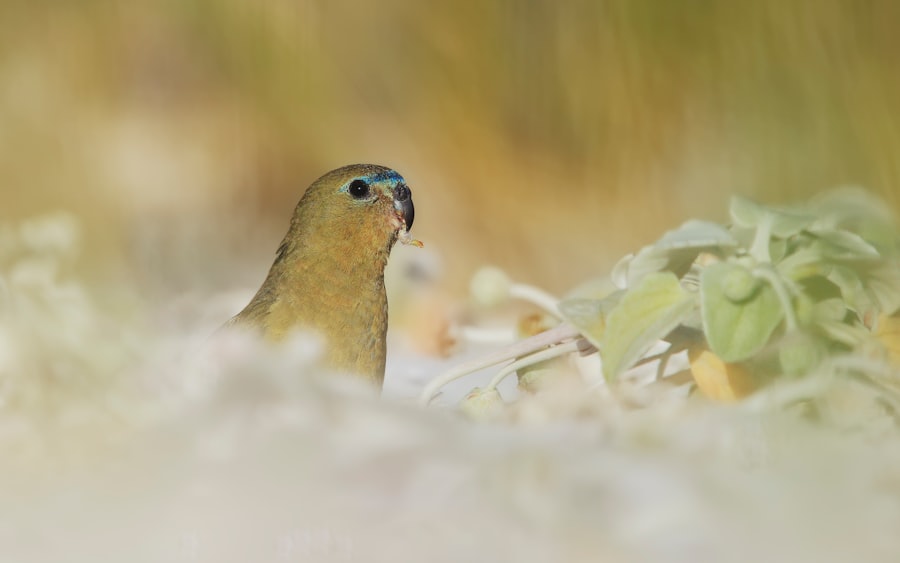
To maintain a healthy goose population, it is important to follow certain guidelines. Firstly, it is crucial to monitor the population and their health regularly. This can be done through visual observations and by reporting any signs of illness or distress to local wildlife authorities.
It is also important to provide a balanced diet for geese and avoid overfeeding them. Feeding geese in moderation helps prevent obesity and other health issues. Additionally, it is important to ensure that the food provided is clean and free from contaminants.
Furthermore, it is essential to maintain a clean environment for geese. This includes regularly cleaning up any leftover food or waste to prevent the spread of diseases. It is also important to avoid feeding geese in areas where their droppings can accumulate and cause water pollution.
The Dos and Don’ts of Feeding Geese
When feeding geese, there are certain dos and don’ts that should be followed. Firstly, do scatter the food on the ground rather than hand-feeding them. This allows the geese to eat at their own pace and reduces the risk of accidental bites or scratches.
Do approach geese slowly and calmly, giving them enough space to move freely. Respect their personal space and avoid getting too close to them. Do use appropriate foods such as cracked corn, oats, barley, leafy greens, duckweed, and water lettuce.
Don’t feed geese with bread or other unhealthy foods that lack essential nutrients. Don’t make sudden movements or loud noises that may startle the geese. Don’t overfeed geese or provide them with excessive amounts of food.
The Ethics of Feeding Geese: Balancing Human Interaction and Wildlife Preservation
Feeding geese raises ethical considerations that need to be addressed. On one hand, feeding geese allows humans to connect with nature and observe these creatures up close. It can be a source of joy and wonder for individuals, especially children, who may not have many opportunities to interact with wildlife.
On the other hand, feeding geese can disrupt their natural foraging behaviors and lead to dependency on humans for food. This can have negative consequences for their overall health and well-being. Geese may become less adept at finding natural food sources and may suffer from malnutrition if they rely solely on handouts.
To balance human interaction with wildlife preservation, it is important to feed geese in moderation and provide them with a balanced diet that complements their natural foraging behaviors. Feeding should not replace their ability to find food in their natural environment. Additionally, it is important to respect the geese’s personal space and avoid any actions that may cause them harm or distress.
The Role of Community Involvement in Geese Feeding Programs
Community involvement plays a crucial role in geese feeding programs. By working together, community members can help maintain a healthy goose population and ensure the well-being of these creatures.
One way community members can get involved is by volunteering at local parks and lakes to monitor the geese population and their health. This can involve conducting regular observations, reporting any signs of illness or distress, and assisting with clean-up efforts.
Community members can also help educate others about the dos and don’ts of feeding geese. By spreading awareness and providing information about proper feeding practices, we can ensure that everyone understands the importance of responsible feeding.
Furthermore, community members can support local wildlife organizations and initiatives that aim to protect and preserve the natural habitats of geese. By donating time or resources, individuals can contribute to the overall well-being of geese and their environment.
The Impact of Feeding Geese on the Environment and Ecosystem
Feeding geese can have both positive and negative effects on the environment and ecosystem. On one hand, feeding geese can attract more of them to public parks and lakes, enhancing the overall biodiversity of these areas. Geese play a role in seed dispersal, which helps promote plant diversity and regeneration.
On the other hand, feeding geese can lead to an overpopulation of geese in certain areas. This can result in increased competition for resources and potential damage to the environment. Geese may overgraze on grass and other vegetation, leading to erosion and loss of habitat for other species.
Additionally, feeding geese can contribute to water pollution if their droppings accumulate in large quantities. This can lead to an increase in nutrient levels in the water, which can negatively impact the health of aquatic ecosystems.
To minimize the negative impact of feeding geese on the environment and ecosystem, it is important to feed them in moderation and provide a balanced diet that complements their natural foraging behaviors. It is also important to clean up any leftover food or waste to prevent water pollution.
Alternatives to Feeding Geese for Those Who Prefer to Observe Wildlife at a Distance
For those who prefer to observe wildlife at a distance rather than actively feed them, there are several alternatives to consider. Firstly, individuals can bring binoculars or cameras to public parks and lakes to observe geese from a distance. This allows for a closer look at their behavior and interactions without directly interfering with their natural foraging behaviors.
Another alternative is to participate in educational programs or guided tours that focus on wildlife observation. These programs often provide opportunities to learn about geese and other wildlife species while respecting their natural habitats.
Furthermore, individuals can support local wildlife organizations and initiatives that aim to protect and preserve the natural habitats of geese. By donating time or resources, individuals can contribute to the overall well-being of geese and their environment without directly feeding them.
Feeding geese in public parks and lakes can be a rewarding experience that allows individuals to connect with nature and observe these magnificent creatures up close. However, it is important to understand the dos and don’ts of feeding geese to ensure their well-being and the preservation of the environment.
By following proper guidelines, such as approaching geese safely, providing a balanced diet, and respecting their personal space, we can create a positive experience for both humans and geese. Additionally, community involvement plays a crucial role in maintaining a healthy goose population and ensuring the well-being of these creatures.
Ultimately, it is important to be responsible when feeding geese in public areas. By understanding the importance of responsible feeding and balancing human interaction with wildlife preservation, we can create a harmonious relationship between humans and geese in public parks and lakes.
If you’re looking to keep calm and feed the geese, you might also be interested in learning about the ideal size for a chicken coop. Having a spacious and comfortable coop is essential for the well-being of your feathered friends. Check out this informative article on “How Big Does a Coop Need to Be for a Chicken?” from Poultry Wizard. It provides valuable insights and guidelines to ensure your chickens have enough room to roam and thrive. Read more
FAQs
What is the article “Keep Calm and Feed the Geese” about?
The article is about the benefits of feeding geese and how it can be a calming and enjoyable activity.
Is feeding geese legal?
Feeding geese is legal in most places, but it is important to check local laws and regulations before feeding them.
What should I feed geese?
Geese can be fed a variety of foods, including cracked corn, oats, barley, and wheat. It is important to avoid feeding them bread, as it can be harmful to their health.
Where is the best place to feed geese?
The best place to feed geese is in a natural setting, such as a park or lake. It is important to avoid feeding them in areas where they may become a nuisance or pose a safety risk.
What are the benefits of feeding geese?
Feeding geese can be a calming and enjoyable activity, and it can also help to strengthen the bond between humans and wildlife. Additionally, feeding geese can help to supplement their diet and improve their overall health.
Are there any risks associated with feeding geese?
Feeding geese can pose some risks, such as the potential for aggressive behavior or the spread of disease. It is important to follow safe feeding practices and avoid overfeeding or feeding them in areas where they may become a nuisance.
Meet Walter, the feathered-friend fanatic of Florida! Nestled in the sunshine state, Walter struts through life with his feathered companions, clucking his way to happiness. With a coop that’s fancier than a five-star hotel, he’s the Don Juan of the chicken world. When he’s not teaching his hens to do the cha-cha, you’ll find him in a heated debate with his prized rooster, Sir Clucks-a-Lot. Walter’s poultry passion is no yolk; he’s the sunny-side-up guy you never knew you needed in your flock of friends!

